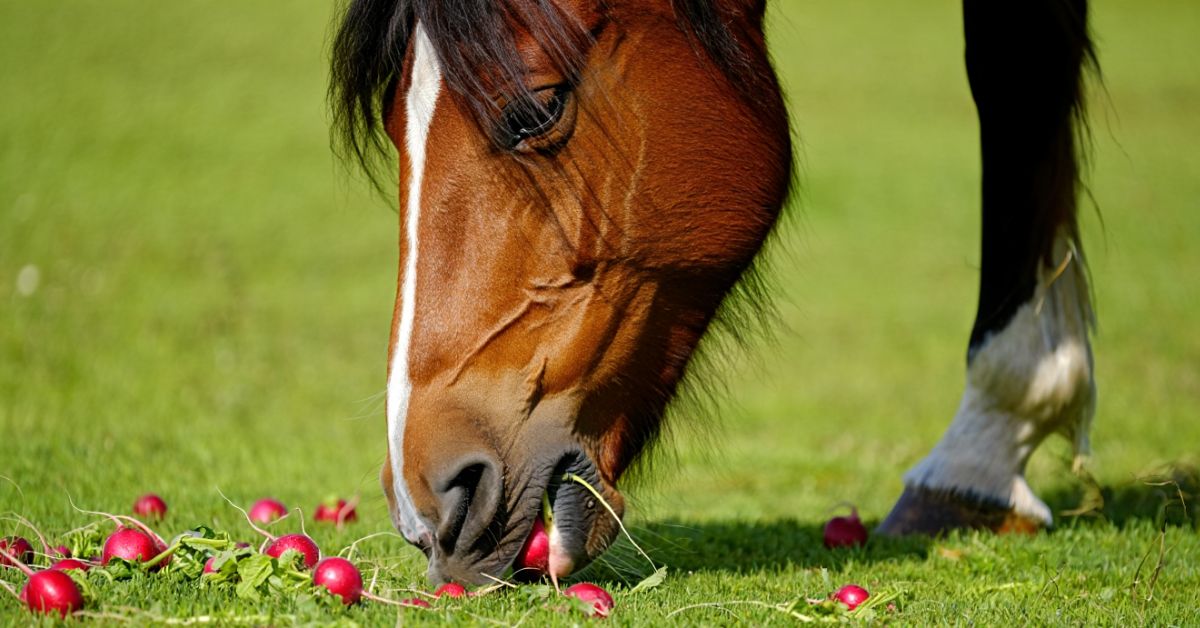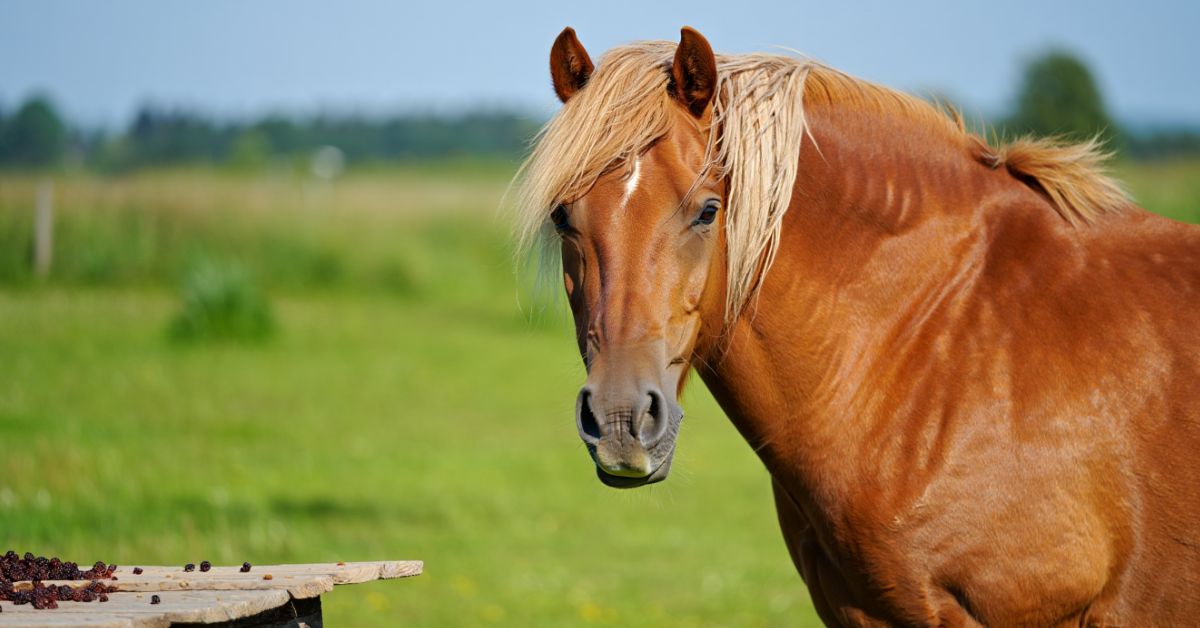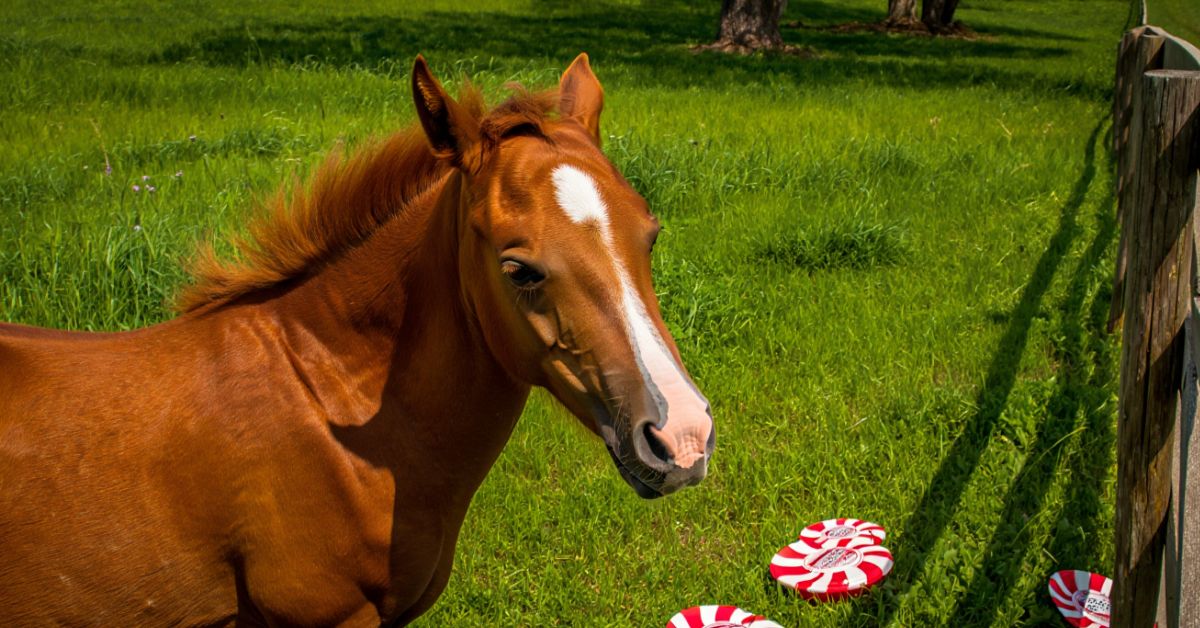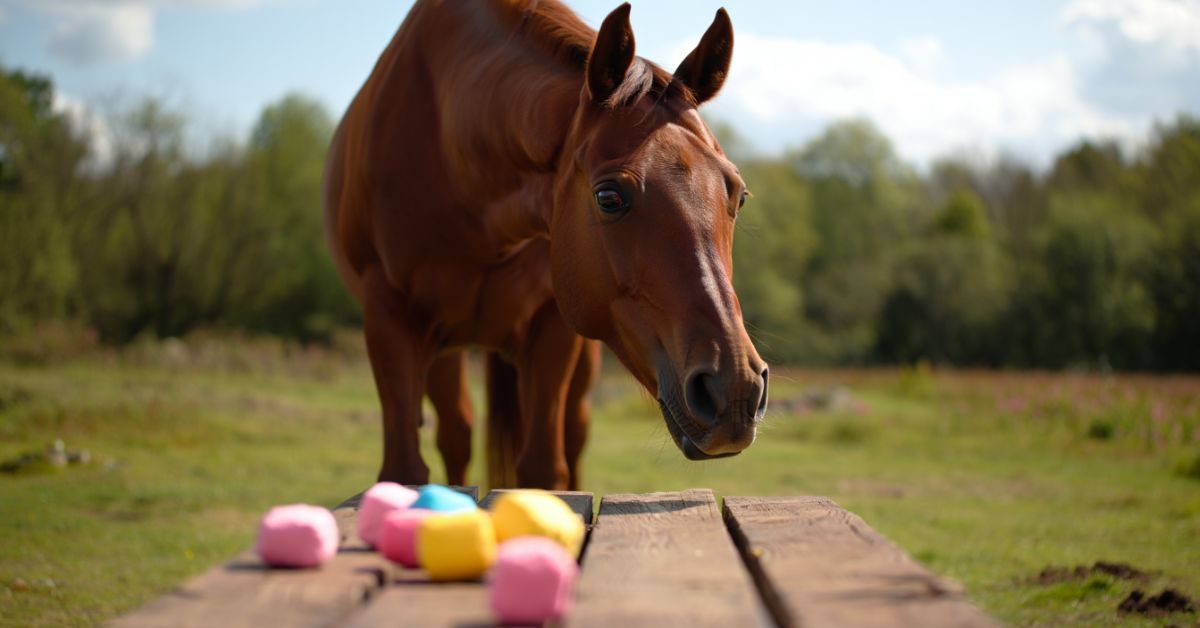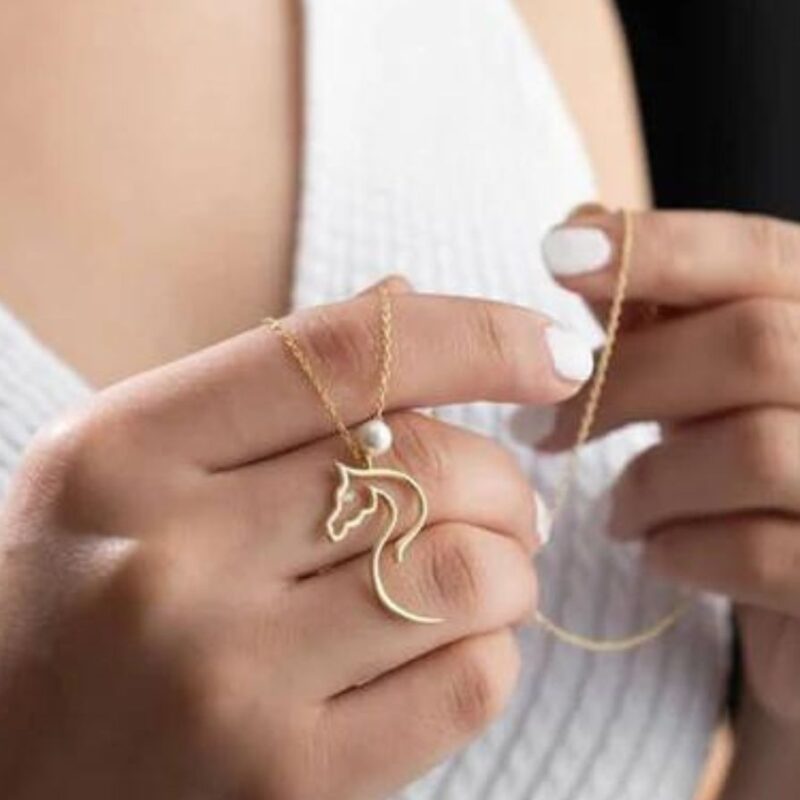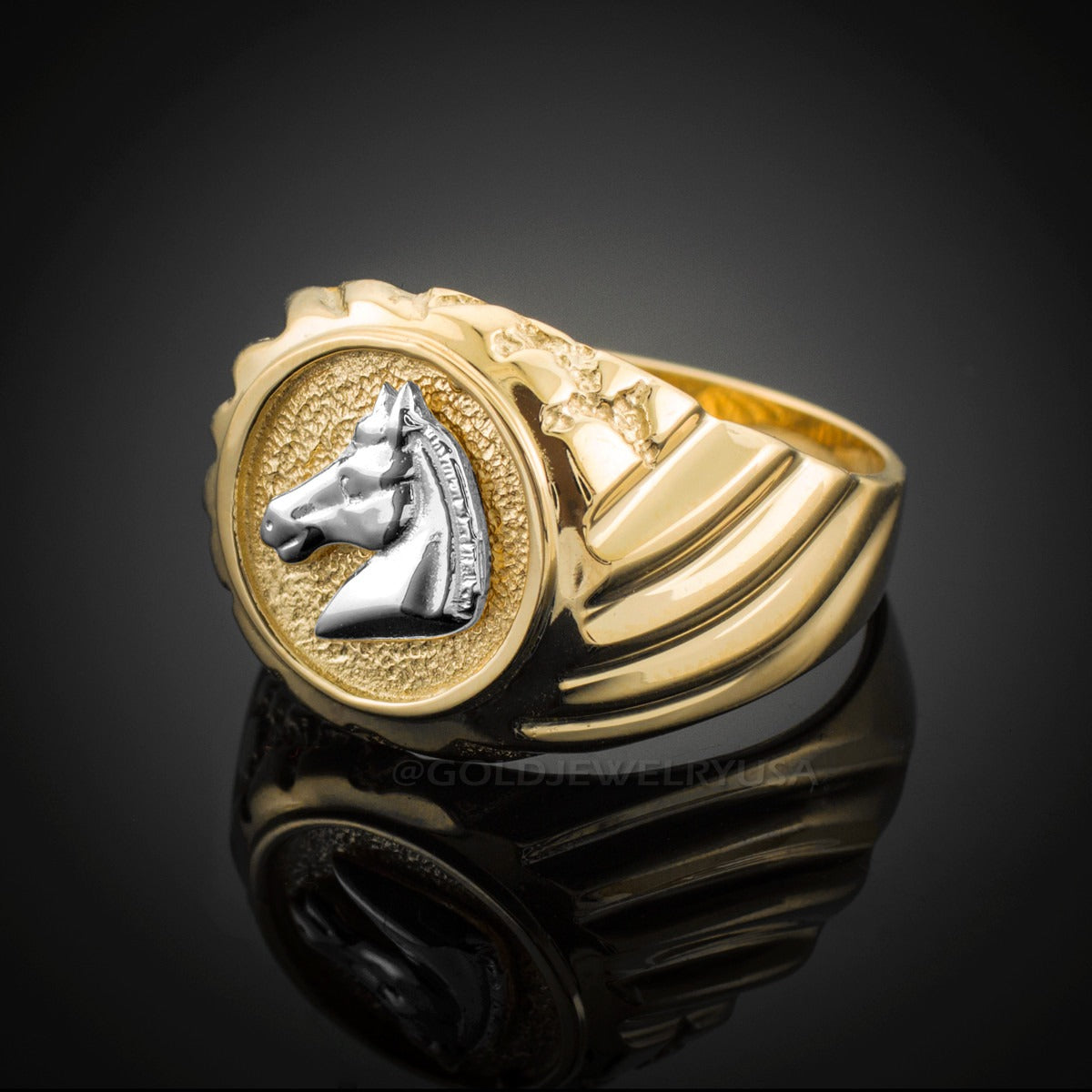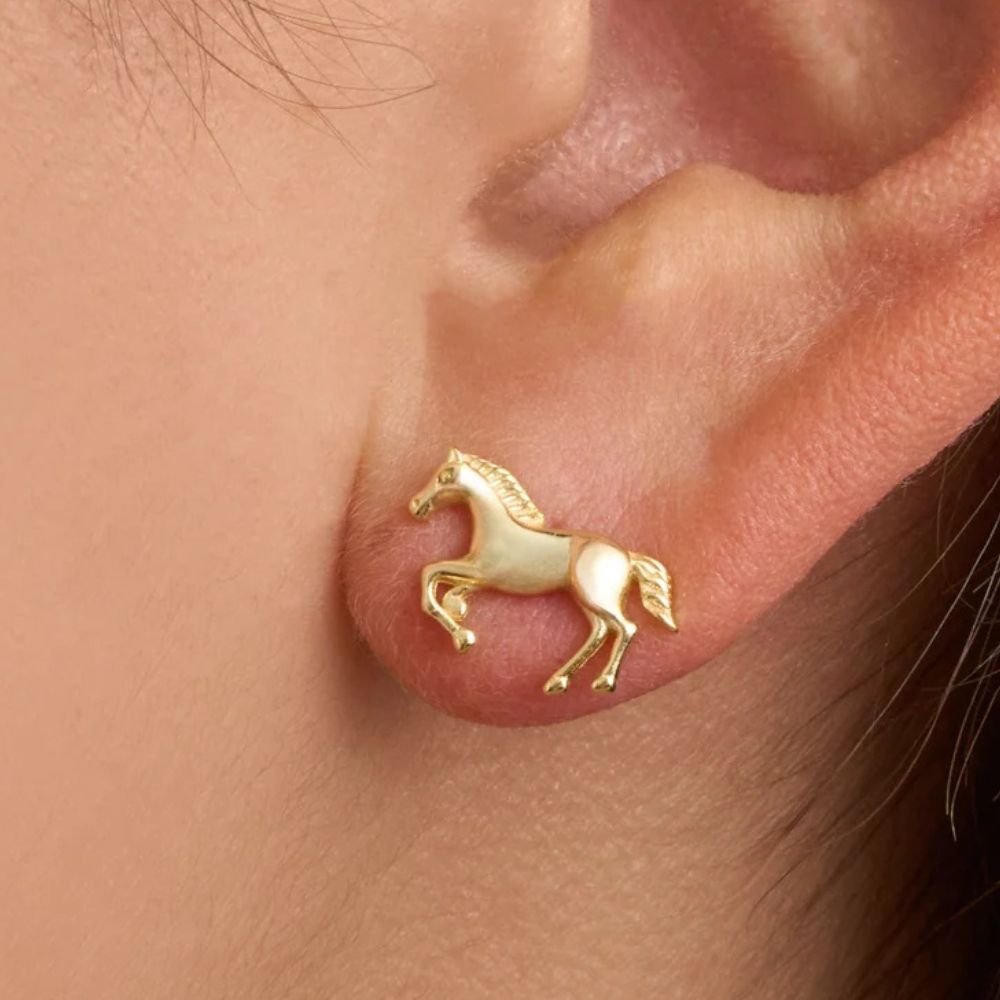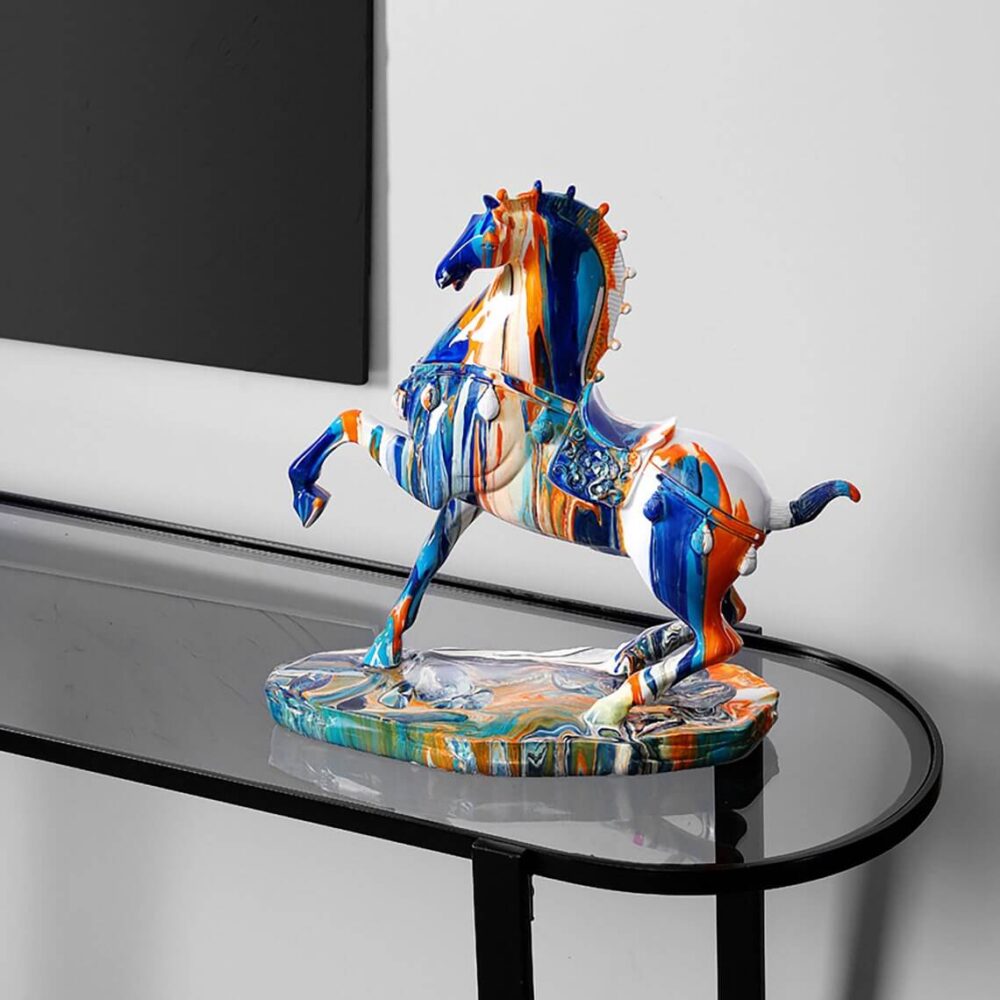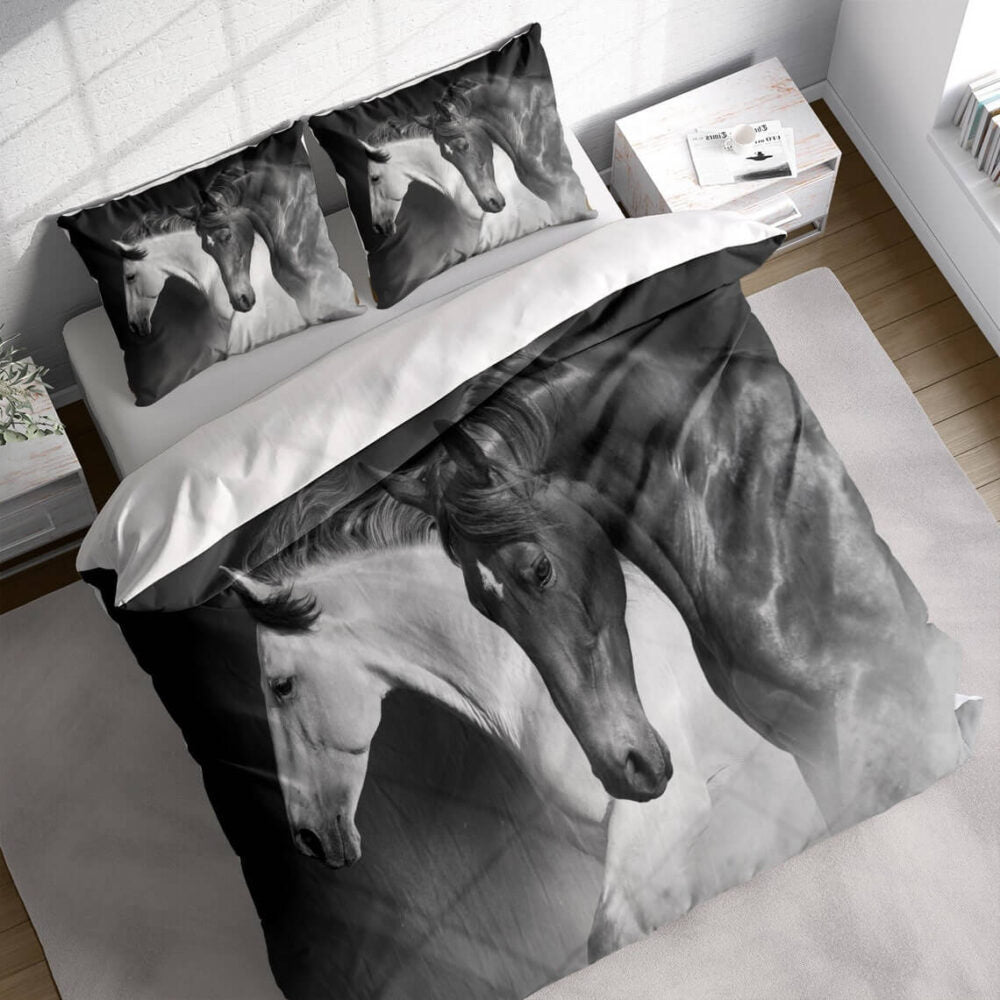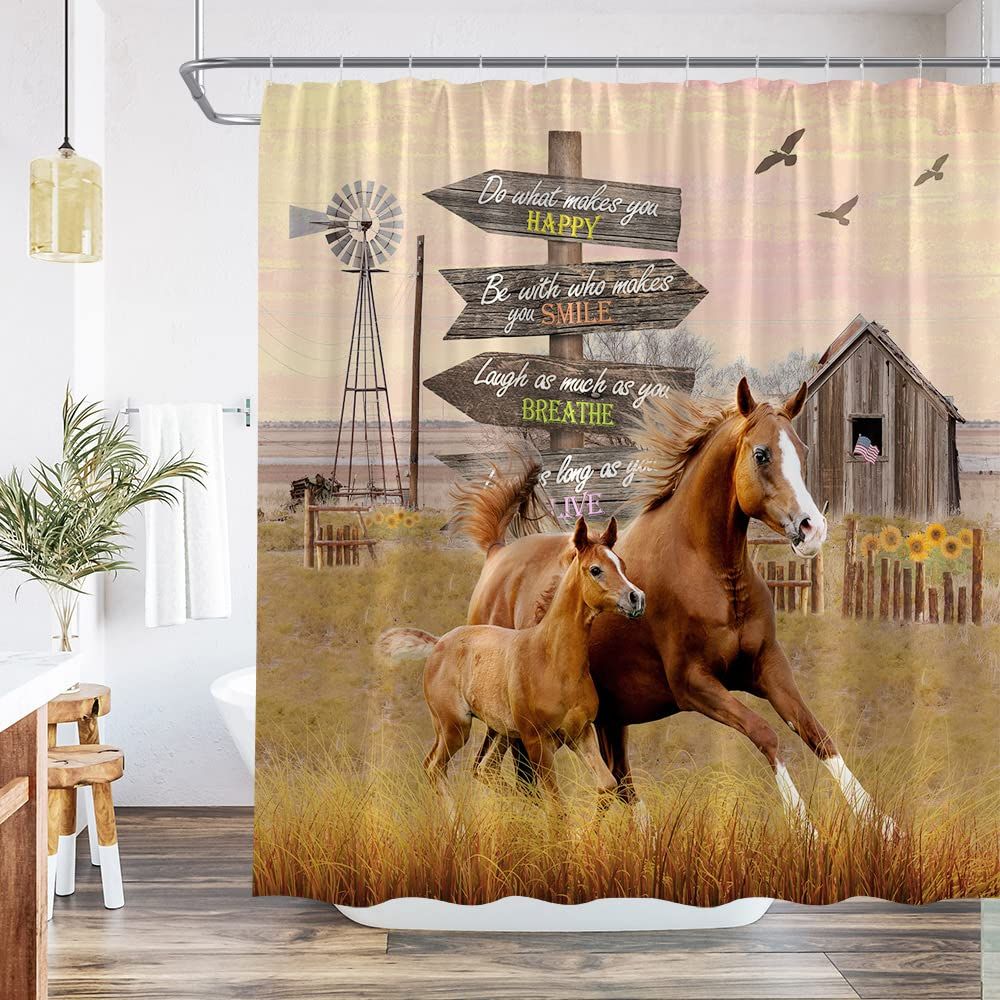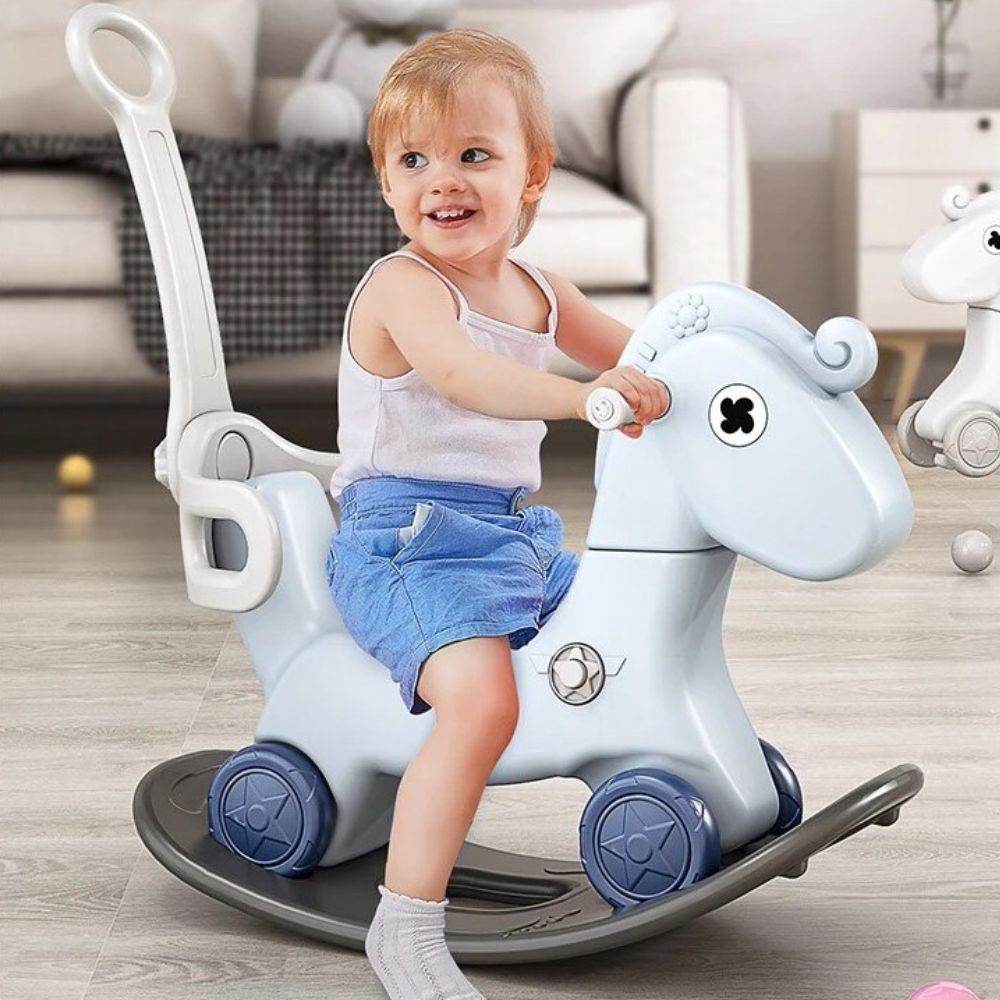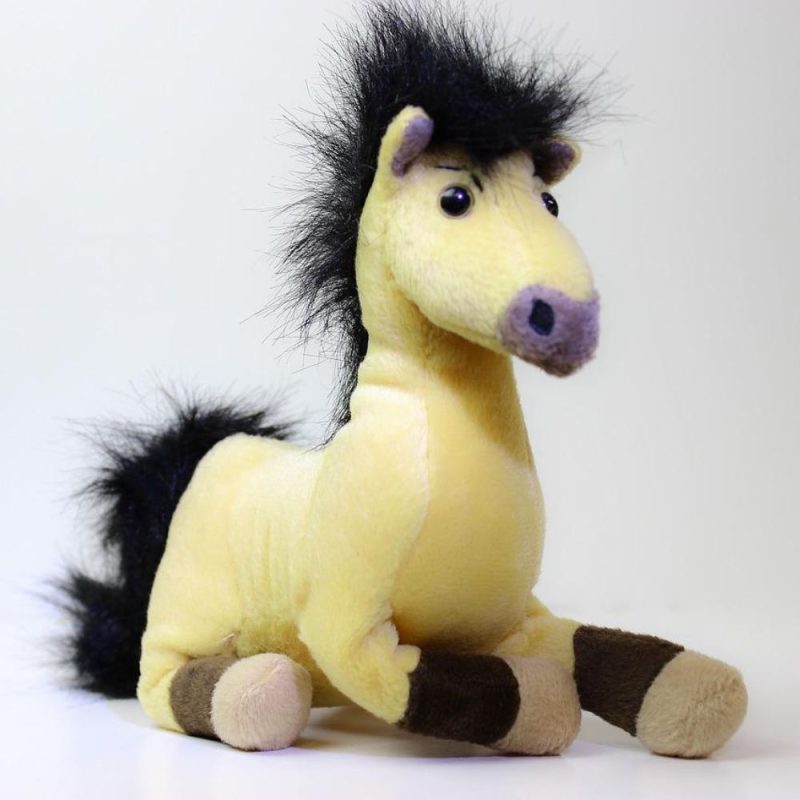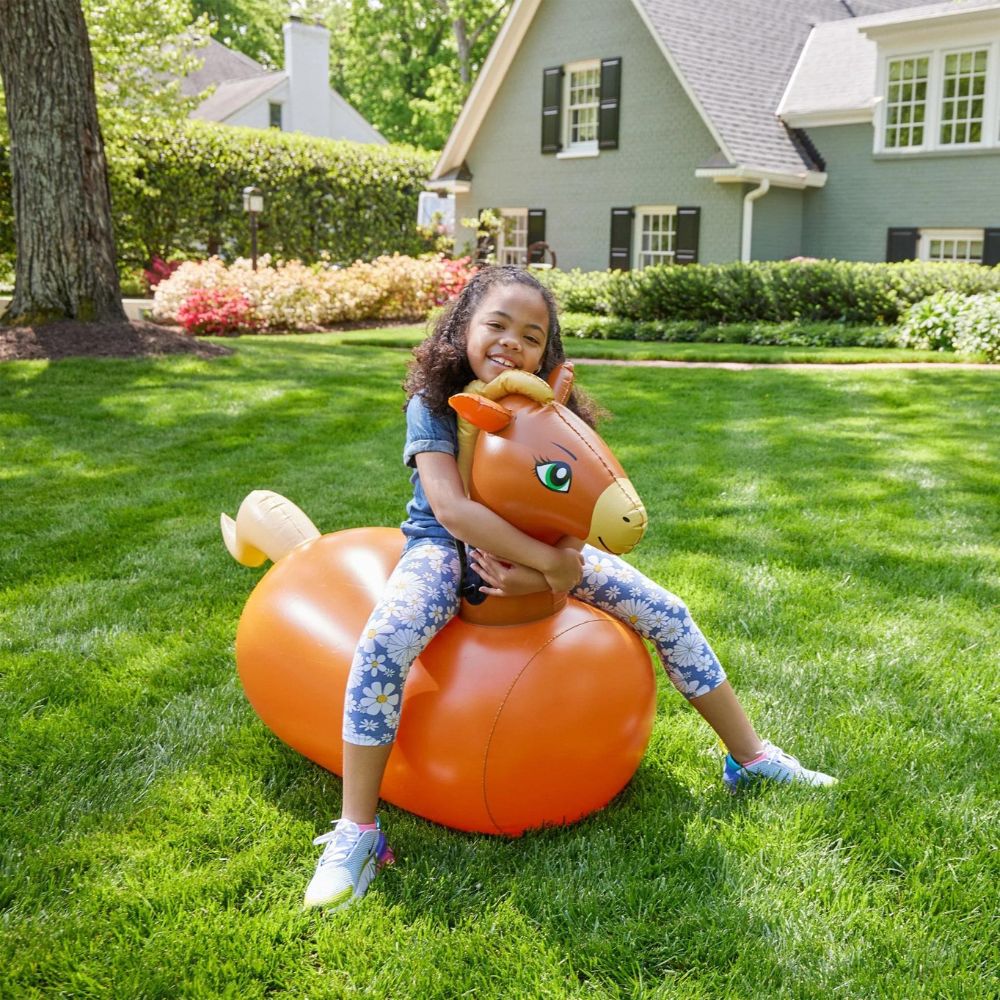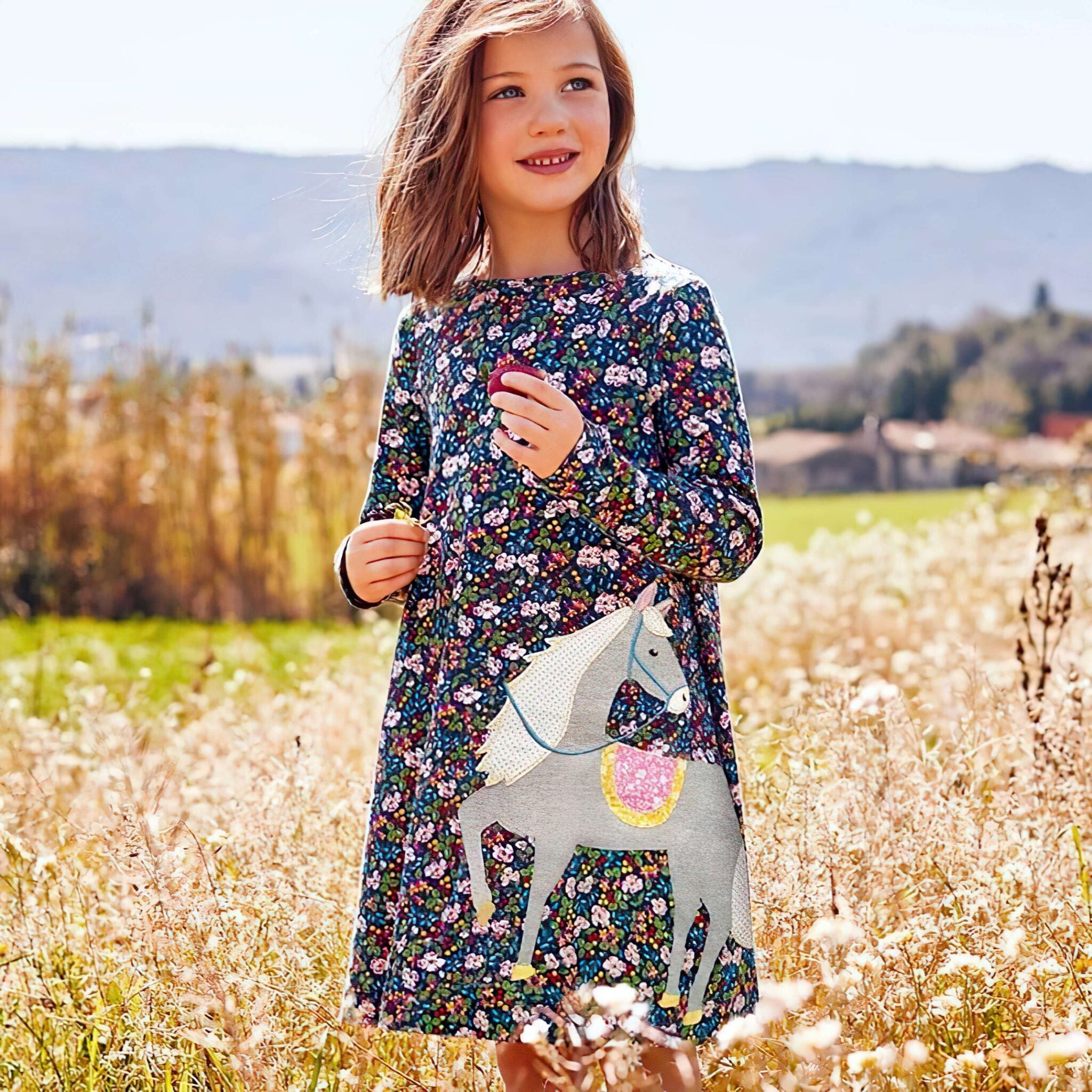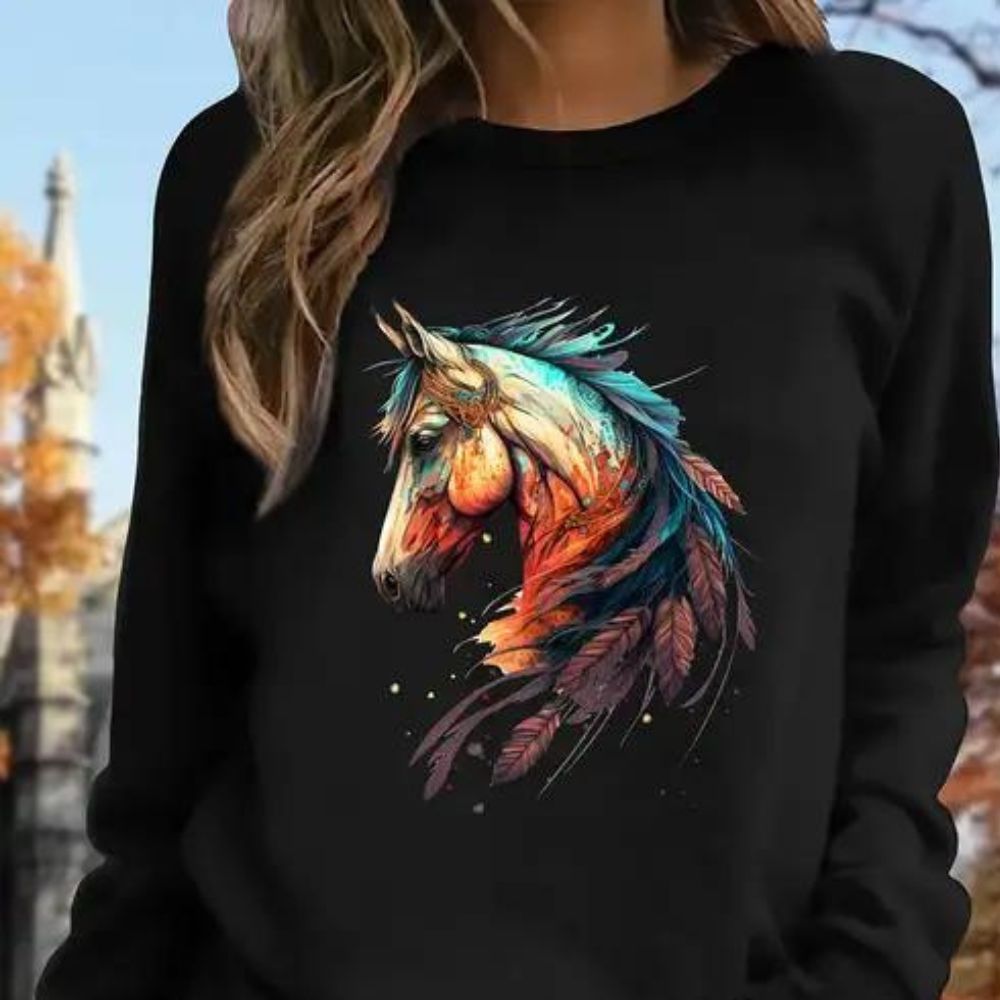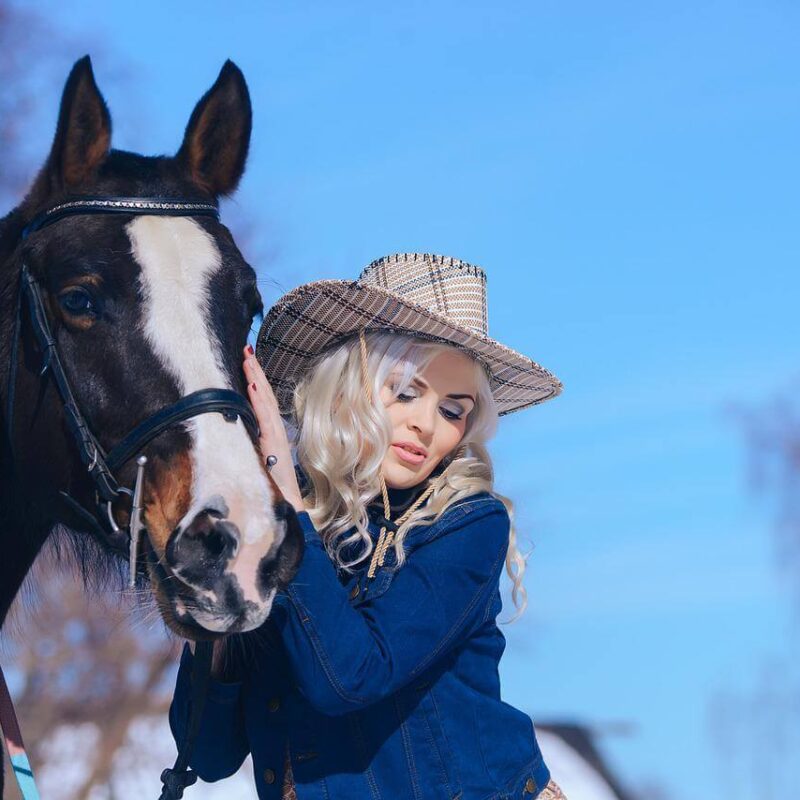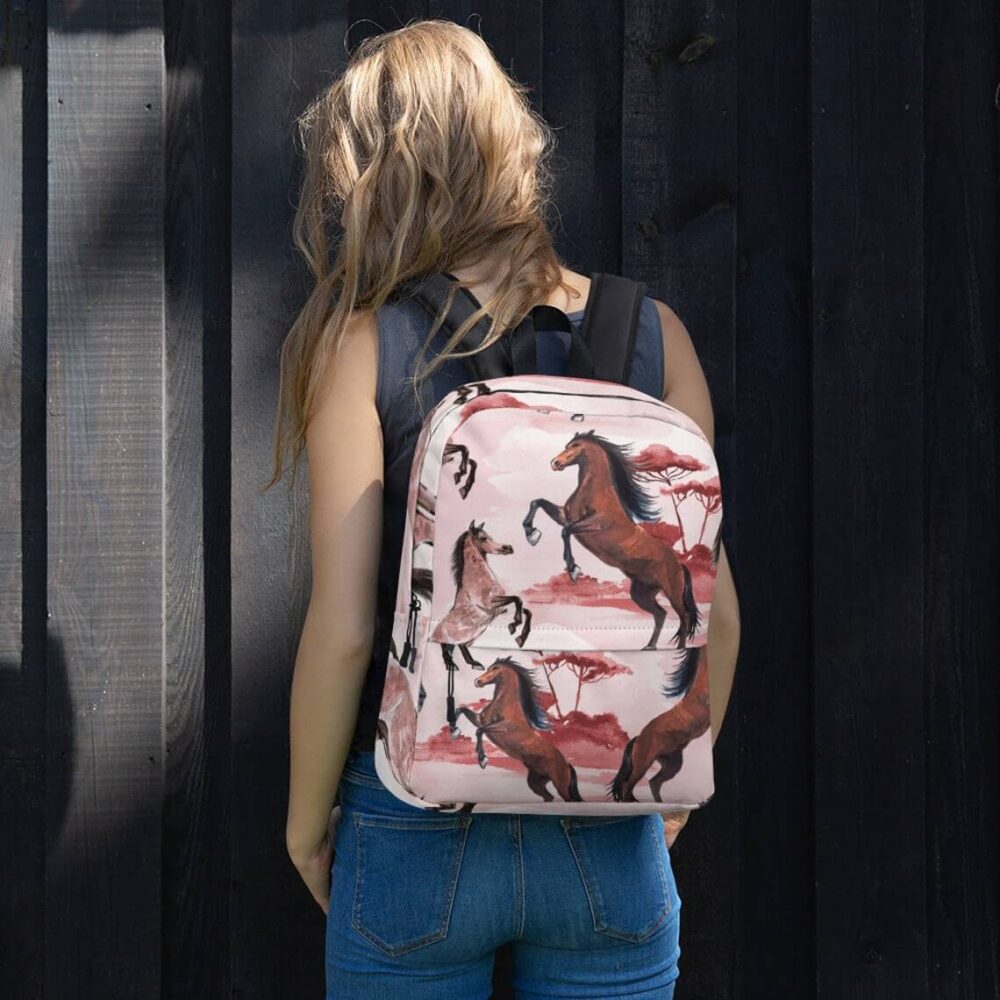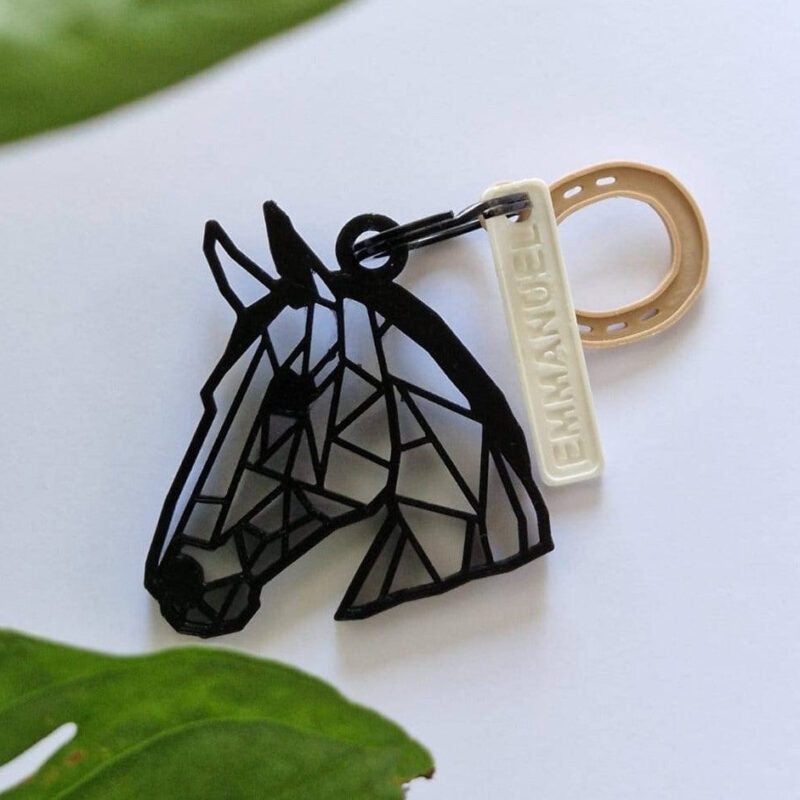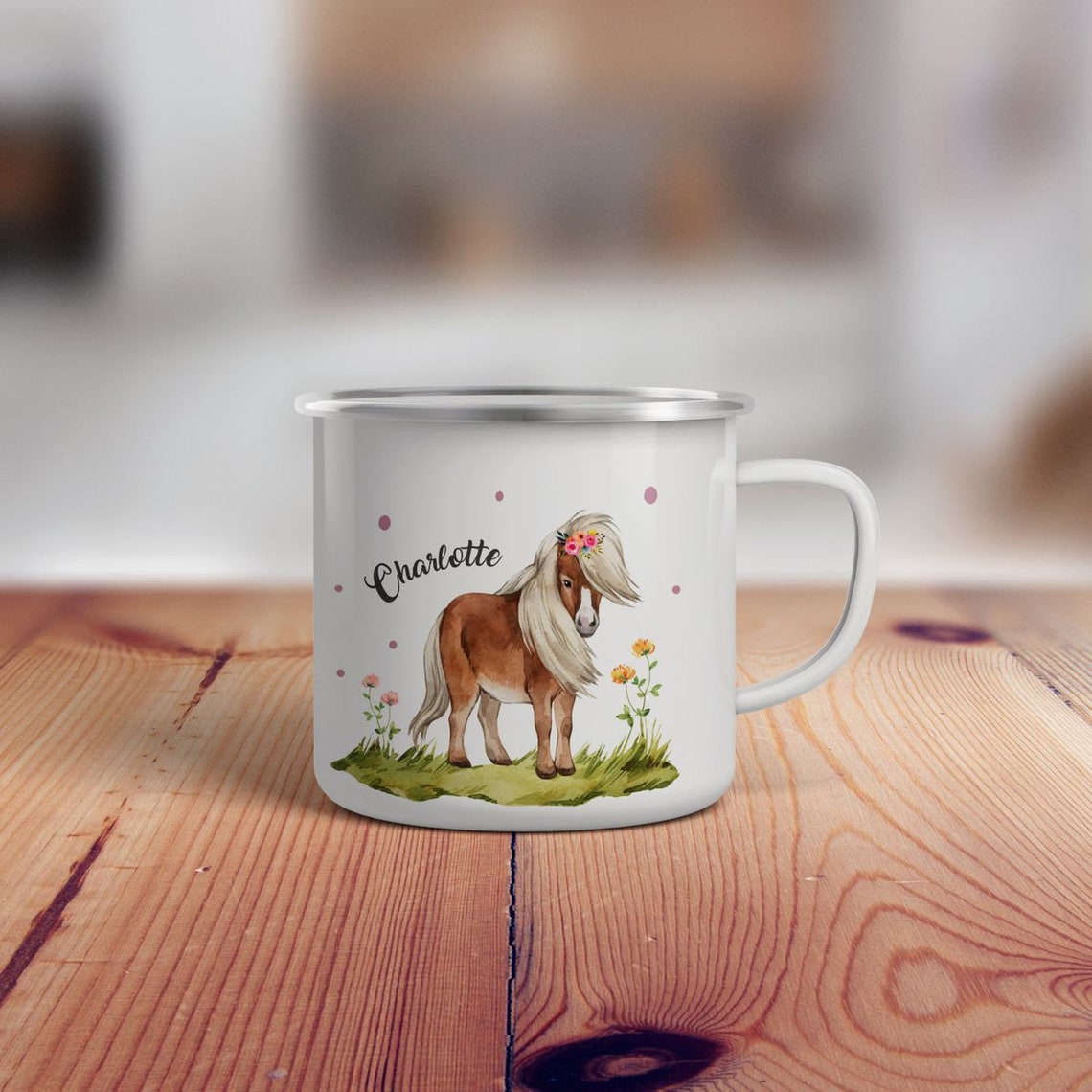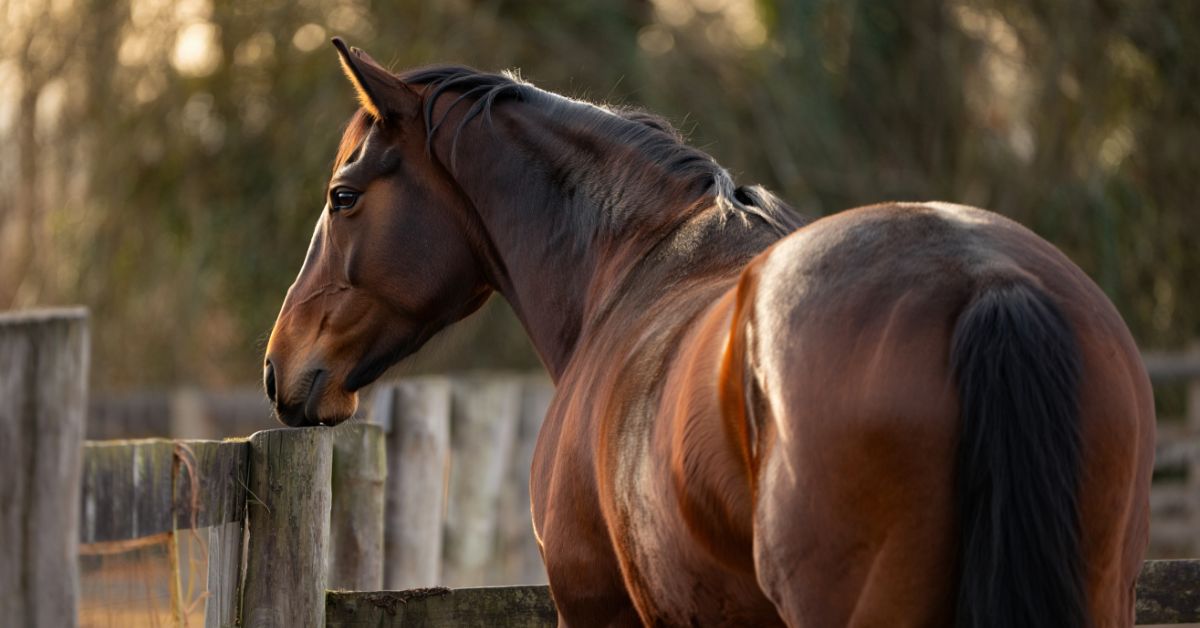
What Causes Swayback in Horses: Understanding Lordosis and How to Help Your Equine Friend
Swayback in horses, also known as lordosis in horses, is a common condition where your horse's back develops an exaggerated downward curve, creating that distinctive hollow or dipped appearance. If you've noticed your beloved companion's spine seems to sink more than it should, you're dealing with what we call a saddle-backed horse. This equine back conformation issue can stem from several factors—genetics, age, pregnancy in mares, poor muscle development, or even improper care throughout their life. While seeing your horse develop this hollow back horse profile can be worrying, understanding what's happening is your first step toward helping them live comfortably. The good news? Many horses with swayback continue to enjoy quality lives with the right management, proper saddle fitting for swayback, and your dedicated care. Whether you're concerned about your aging gelding or curious about that rescue mare you've been eyeing, this guide will walk you through everything you need to know about the causes of swayback and how to give your horse the best life possible.
Understanding Swayback: What's Really Happening to Your Horse's Back 🔍
The Anatomy Behind the Dip
When we talk about swayback in horses, we're looking at a fundamental change in your horse's vertebral column structure horse. Picture your horse's spine like a suspension bridge—it's designed to carry weight efficiently when everything's aligned properly. In a healthy horse, the back has a natural gentle curve. But with lordosis, this curve becomes exaggerated, sometimes dramatically so.
The thoracolumbar region horse—that's the middle section of the back where your saddle sits—is particularly affected. The spinous process deformation occurs when those bony projections along the spine start shifting position, and the ligament laxity in horse back allows everything to sag downward. Think of it like an old mattress that's lost its support. As veterinarian Dr. Sue Dyson noted in 2018, "The structural changes in swayback represent a complex interplay between skeletal changes and soft tissue weakening that develops over time."
Spotting the Signs Early
Recognizing swayback in horses isn't always straightforward, especially in the early stages. Here's what you should watch for:
-
Difference between mild and severe swayback: Mild cases show a subtle dip that's barely noticeable when your horse is standing square, while severe cases display an obvious U-shaped depression
-
Changes in how your saddle sits—it might roll forward more easily or create new pressure points
-
Your horse's withers appearing more prominent than before
-
A more pronounced curve when viewed from the side, especially visible when your horse is moving
The tricky part? Some horses are born with backs that naturally sit a bit lower (we'll talk about congenital lordosis shortly), while others develop it gradually. Pay attention to changes over time rather than just a single observation.
Chapter 1: The Genetic Factor—When Swayback Runs in the Family
Born This Way: Congenital Lordosis
Sometimes, swayback in horses is simply written into their DNA. Genetics of swayback play a significant role, and certain bloodlines are more predisposed to developing lordosis in horses than others. Congenital lordosis means your foal enters the world with the condition already present or with a strong predisposition to develop it quickly.
American Saddlebreds, Tennessee Walking Horses, and some Arabian lines have shown higher incidences of this equine back conformation issue. It's not that these breeds are "worse"—they've simply been bred for specific traits that sometimes come packaged with back structure variations. If you're considering breeding your mare, understanding the breeding for back strength in her lineage is crucial.
The bone structure changes horse back in congenital cases often become apparent within the first year of life. You'll notice the foal's back doesn't develop the same muscular support and structural integrity as its peers. This is where hereditary factors swayback come into play—if both parents carry genes associated with weaker back structures, the offspring face higher risks.
The Breeding Dilemma
Here's where it gets personal for those of us who love breeding horses: Do you breed a mare with mild swayback? The honest answer depends on several factors. Consider the overall equine conformation faults in both potential parents, not just the back. A mare with mild swayback but exceptional temperament, movement, and health might still produce wonderful foals if paired with a stallion with exceptional back strength.
However, if you're passionate about improving the breed and maintaining structural soundness, selecting against obvious swayback makes sense. As the saying goes, "Breed the best to the best, and hope for the best"—attributed to countless horse breeders over generations. Your goal should be producing horses that can work comfortably throughout their lives.
At Dream Horse, we celebrate every horse's unique qualities while encouraging responsible breeding decisions. Our equestrian jewelry collections honor the beauty of all horses, regardless of their conformation, because every horse deserves love and appreciation! 💝
Chapter 2: Age and Pregnancy—The Unavoidable Life Stages
Let's be real—getting older changes everything, and our horses aren't immune. Age-related swayback is perhaps the most common form you'll encounter, and frankly, it's something many senior horses experience to some degree. Just like we might develop posture changes as we age, horses do too.
When Time Takes Its Toll
Old horse back issues develop gradually, often so slowly you might not notice until you compare recent photos with ones from five years ago. The weakened back muscles in horses start losing their tone and strength, usually beginning around age 15-20, though some horses show signs earlier or much later.
The lumbar spine issues horse owners face with aging horses involve multiple factors happening simultaneously. The intervertebral discs compress slightly over decades of use. The supporting ligaments stretch out—that ligament laxity in horse back we mentioned earlier. Meanwhile, the muscles that once held everything firm begin experiencing muscle atrophy horse back, creating less support for the skeletal structure beneath.
Think of it like your favorite pair of jeans. When they're new, they hold their shape perfectly. After years of wear, they stretch out and sag in certain areas. Your horse's back is dealing with similar wear-and-tear, except the consequences affect their comfort and soundness. By 2023, research indicated approximately 35-40% of horses over age 20 showed some degree of swayback development.
The Pregnancy Factor
Now, let's talk about mama horses. Mares carrying foals swayback is a real phenomenon, and it makes perfect biological sense. The impact of pregnancy on horse back can be substantial, especially for mares who've had multiple foals or carried particularly large babies.
During pregnancy, particularly in the last trimester, your mare is carrying 100+ pounds of baby, plus all the amniotic fluid and membranes. That's a lot of extra weight pulling downward on her spine for months. The hormone relaxin, which loosens ligaments to prepare for birth, affects the entire body—including those crucial back-supporting ligaments.
Here's what happens:
Immediate effects: The spine sags under the extra weight, and muscles strain to compensate
Long-term impact: After multiple pregnancies, the ligaments may never fully return to their original tension, and the vertebral column structure horse can permanently change
Recovery potential: Young, fit mares with excellent nutrition and conditioning recover better than older mares or those in poor condition
Does this mean you shouldn't breed your mare? Not necessarily. But it does mean you should be strategic about it. Keeping your broodmare fit before and during pregnancy, providing excellent nutrition and swayback prevention through balanced feeding, and limiting the total number of foals can help minimize permanent changes.
At Dream Horse, we honor the amazing mares who've given us beautiful foals. Check out our gifts for horse lovers that celebrate the special bond between horses and their humans—including those incredible broodmares! 🎁
Managing Your Senior or Broodmare
Whether you're caring for an aging gelding or a retired broodmare, managing swayback horse comes down to three key areas: proper saddle fit, appropriate exercise, and attentive health monitoring. Your older horse or former broodmare deserves to live out their years comfortably, and with some adjustments, they absolutely can.
Consider a saddle pad designed specifically for swayback, or have a saddle fitter create custom padding that fills the hollow without creating new pressure points. Many saddle-backed horses benefit from light riding that maintains muscle tone without straining their backs. Walking, gentle trail rides, and light flat work keep those muscles engaged without asking too much.
Chapter 3: Poor Conditioning and Management Issues
H3: The Role of Muscle Support
Here's something many horse owners don't realize until it's too late: weakened back muscles in horses don't just happen—they're often created through inadequate conditioning, poor riding practices, or simple neglect. Your horse's back muscles are like your core muscles. If you sit on the couch for six months, your core weakens, your posture suffers, and you're more prone to back pain. The same principle applies to horses.
A horse that lives turned out 24/7 without structured exercise won't develop the same topline strength as one with a balanced fitness program. Young horses brought into work too early, before their skeletal system fully matures (around age 6), face higher risks of developing equine orthopedic conditions including swayback. Conversely, horses that never get adequate exercise experience muscle atrophy horse back that fails to support their spine properly.
H3: The Nutrition Connection
Let's talk about something often overlooked: nutrition and swayback are deeply connected. Your horse's diet directly affects their muscle development, bone density, and ligament health. Poor nutrition during growth years can set the stage for conformation defects in horses that manifest as swayback later in life.
Key nutritional factors include:
Protein quality and quantity: Essential for building and maintaining muscle mass that supports the spine
Minerals balance: Calcium, phosphorus, copper, and zinc all play roles in bone and connective tissue health
Vitamin E and selenium: Critical for muscle function and preventing muscle wasting
Adequate calories: Underweight horses can't maintain proper muscle coverage over their backs
A horse that's chronically thin or poorly muscled is fighting a losing battle against gravity. The vertebral column structure horse needs that muscular padding and active support to maintain proper alignment. Feed quality forage, balanced concentrate when needed, and consider supplements that support joint and muscle health—especially for senior horses or those showing early signs of back weakness.
H3: Riding and Training Impacts
Be honest with yourself: Could your riding be contributing to your horse's back problems? The impact of riding posture on horse back is real and significant. A rider who sits too far back, pounds on their horse's back, or rides with terrible posture creates unnecessary strain on the horse's spine.
Similarly, using tack that doesn't fit properly accelerates the development of lordosis in horses. A saddle that's too long, too narrow, or doesn't distribute weight evenly creates pressure points that cause your horse to hollow their back defensively. Over time, this defensive posture becomes the default, and the muscles that should be lifting the back instead weaken from disuse.
As trainer and biomechanics expert Mary Wanless once said, "The horse's back is not designed to carry weight—it's designed to transmit power. Our job as riders is to interfere with that power transmission as little as possible." Think about that next time you're in the saddle. Are you helping or hindering?
Preventing swayback through proper riding means:
-
Building your horse's topline through correct work that engages their core
-
Ensuring your saddle fits properly and is regularly checked by a qualified fitter
-
Riding balanced and centered, not leaning back or forward excessively
-
Incorporating ground work and exercises that strengthen the back naturally
Chapter 4: Underlying Health Conditions and Medical Causes
Sometimes, swayback in horses signals something deeper going on beneath the surface. While we've talked about genetics, age, and management, we can't ignore the potential underlying health issues swayback might indicate. This is where working closely with your veterinarian becomes absolutely essential.
H3: Cushing's Disease and Hormonal Imbalances
Equine Cushing's disease (PPID - Pituitary Pars Intermedia Dysfunction) is a hormonal disorder that affects older horses and can contribute significantly to the development of lordosis in horses. Horses with Cushing's often lose muscle mass despite adequate nutrition, develop a long, shaggy coat that doesn't shed properly, and experience changes in fat distribution—including losing the muscles along their topline.
The muscle wasting associated with Cushing's removes the critical support your horse's spine needs, allowing the back to sag into that characteristic swayback position. If your previously well-muscled horse suddenly develops a hollow back along with other symptoms like excessive drinking, chronic laminitis, or lethargy, Cushing's should be on your differential diagnosis list.
Testing for Cushing's is straightforward—your vet can run blood tests to check hormone levels. If diagnosed, medication can help manage symptoms and potentially slow the progression of muscle atrophy horse back. In 2024, studies showed that approximately 20-30% of horses over age 15 have some degree of Cushing's disease, making it a significant factor in age-related back changes.
H3: Neurological Issues
Some cases of apparent swayback are actually neurological in origin. Conditions like Equine Protozoal Myeloencephalitis (EPM), West Nile Virus residual effects, or cervical vertebral stenosis (Wobbler Syndrome) can cause weakness and muscle atrophy horse back that mimics or contributes to lordosis in horses.
The key difference? Neurological causes usually come with other signs: ataxia (incoordination), weakness in specific limbs, or changes in sensation. If your horse develops swayback rapidly—over weeks or months rather than years—or if they're showing other neurological symptoms, immediate veterinary care for lordosis and underlying causes is crucial.
H3: Diagnosis of Swayback
Proper diagnosis of swayback involves more than just looking at your horse's back. Your veterinarian should conduct a thorough examination that includes:
-
Visual assessment of the spinal curvature from multiple angles
-
Palpation of the back to check for pain, muscle atrophy, and range of motion
-
Evaluation of overall body condition and muscle development
-
Assessment of any underlying conditions that might contribute to the problem
-
Potentially radiographs or ultrasound to evaluate bone structure changes horse back and soft tissue damage
Understanding whether you're dealing with congenital lordosis, age-related changes, or something more serious guides your management plan. Don't skip this step—proper diagnosis makes all the difference in how you care for your horse moving forward.
Chapter 5: Living Well with Swayback—Management and Treatment Options
So your horse has swayback. Now what? The reality is that while you usually can't reverse established lordosis in horses, you absolutely can manage it successfully. Managing swayback horse is about maximizing comfort, maintaining function, and ensuring your equine friend enjoys the best quality of life possible.
Can You Still Ride a Swayback Horse?
The million-dollar question: riding a swayback horse—is it possible? The answer is: it depends. Many horses with mild to moderate swayback continue working happily with appropriate modifications. Severe cases might be better suited to retirement or very light work only.
Consider these factors:
Severity of the condition: Mild swayback rarely prevents riding if properly managed
Your horse's comfort: Does your horse show signs of back pain in horses when ridden? Pain trumps everything else
The work you're asking for: Light trail riding differs dramatically from jumping or collected dressage
Saddle fit quality: This becomes absolutely critical—more on this in a moment
Your weight and riding ability: A lighter, balanced rider causes less strain than a heavy or unbalanced one
Many horses with swayback continue doing light trail riding, pleasure riding, and even some showing in appropriate disciplines well into their senior years. The key is listening to your horse and prioritizing their comfort over your ambitions.
The Critical Importance of Saddle Fitting for Swayback
Let's be crystal clear: saddle fitting for swayback is non-negotiable if you plan to ride. A standard saddle on a swayback horse is like wearing shoes two sizes too small—it's going to create pain and damage over time.
You have several options:
Custom saddle pads: Pads designed to fill the hollow while distributing pressure evenly across the back
Adjustable gullet saddles: Allow you to modify the fit as your horse's back changes
Custom-made saddles: The gold standard but also the most expensive option
Properly fitted treeless saddles: Can work well for some swayback horses when fitted correctly
The goal is ensuring the saddle doesn't bridge (touching only at the front and back while leaving the middle unsupported), doesn't create pressure points, and distributes your weight as evenly as possible across the load-bearing surfaces. Work with a certified saddle fitter who has experience with equine back conformation issues. This isn't an area to DIY or guess about.
At Dream Horse, we know how important proper equipment is, but we also know that celebrating your passion for horses is equally important! Our equestrian decor collection brings that horse-loving spirit into your home. Express your individuality with pieces that reflect your dedication to these amazing animals! 🖼️
Exercises for Swayback Horses
Strategic exercises for swayback horses can help maintain existing muscle tone and prevent further deterioration. The goal isn't to "fix" the swayback but to keep your horse as strong and comfortable as possible.
Effective exercises include:
-
Carrot stretches: Encourage your horse to reach down and around to both sides, stretching and engaging back muscles
-
Hill work: Walking up hills naturally engages the hindquarters and lifts the back
-
Ground poles: Walking over poles encourages your horse to lift their back and engage their core
-
Backing up: Activates the muscles along the topline when done correctly
-
Long and low work: Allowing your horse to stretch forward and down under saddle (if riding) builds topline muscle
Avoid exercises that excessively hollow the back or put strain on an already compromised structure. High jumps, sudden stops or turns, and work that requires extreme collection all place additional stress on a swayback horse's spine.
Treatment Options for Lordosis
While there's no cure that will straighten a swayback horse's spine, various treatment options for lordosis can improve comfort and function:
Physical therapy and massage: Regular bodywork helps maintain muscle flexibility and reduces compensatory tension
Chiropractic care: Some horses benefit from adjustments that optimize the function of their existing structure
Acupuncture: Can help manage pain and improve overall well-being
Anti-inflammatory medications: For horses experiencing back pain in horses, NSAIDs under veterinary guidance can improve quality of life
Adequan or similar joint supplements: Support the health of the joints between vertebrae
Nutritional support: High-quality protein, balanced minerals, and supplements that support muscle and joint health
Remember, managing swayback horse is a long-term commitment. What works today might need adjustment next year as your horse ages or their condition progresses.
The Prevention Question
Can you prevent swayback? Preventing swayback isn't always possible—genetics and aging happen regardless of our best efforts. However, you can minimize risk and delay progression through:
-
Excellent nutrition from foal hood through senior years
-
Appropriate exercise and conditioning throughout life
-
Proper saddle fit and riding technique
-
Maintaining healthy body weight
-
Thoughtful breeding decisions that consider breeding for back strength
-
Regular veterinary care to catch and treat underlying conditions early
Think of it as insurance for your horse's future. The effort you put in during their young and middle years pays dividends when they reach their senior stage.
Frequently Asked Questions on Swayback in Horses 🤔
Can swayback in horses be corrected?
Unfortunately, established swayback in horses cannot be corrected or reversed. The structural changes to the vertebral column structure horse, including spinous process deformation and ligament laxity in horse back, are permanent once they've occurred. However, you can definitely manage the condition through proper saddle fitting for swayback, appropriate exercise, and addressing any underlying health issues swayback might be masking. Horses with swayback can live comfortable, happy lives with the right care and realistic expectations about their capabilities.
Is swayback painful for horses?
Swayback in horses itself isn't necessarily painful, but it can lead to secondary issues that cause discomfort. Many horses with mild lordosis in horses show no signs of back pain in horses at all. However, the altered biomechanics can create muscle soreness, particularly if the horse is asked to work in ways that stress their compromised structure. Improperly fitted saddles on swayback horses definitely cause pain. The key is watching for behavioral changes—reluctance to be saddled, pinned ears when mounting, stiffness, or shortened stride—that suggest discomfort.
What's the difference between mild and severe swayback?
The difference between mild and severe swayback relates to the degree of spinal curvature and its impact on function. Mild swayback shows a subtle dip in the spine that might only be noticeable when you look carefully from the side. These horses typically work normally with proper saddle fitting. Moderate swayback features a more obvious hollow that's visible at a glance but still allows reasonable function with appropriate management. Severe lordosis in horses displays a dramatic U-shaped depression in the back, often makes saddle fitting for swayback extremely challenging, and may limit the horse's ability to carry a rider comfortably. Severity often determines whether riding a swayback horse remains feasible.
Can you breed a horse with swayback?
You can technically breed a horse with swayback, but whether you should is another question entirely. If the causes of swayback in your mare include genetics of swayback or congenital lordosis, breeding her risks passing those traits to her offspring. Additionally, mares carrying foals swayback often worsens during and after pregnancy, and the impact of pregnancy on horse back can be significant for a mare already dealing with lordosis in horses. If the swayback is purely age-related in an older mare with no genetic predisposition, and if her overall conformation and temperament are excellent, breeding might be defensible—but consider the ethics carefully. Responsible breeding for back strength means selecting against obvious structural weaknesses when possible.
Does swayback get worse with age?
Yes, age-related swayback typically progresses over time, though the rate varies dramatically between individuals. As horses enter their senior years, natural muscle atrophy horse back occurs, ligaments continue losing elasticity, and the bone structure changes horse back that define swayback often become more pronounced. Old horse back issues accumulate—what started as mild swayback at age 15 might progress to moderate or severe by age 25. However, horses with excellent lifelong care, proper nutrition, appropriate exercise, and management of any underlying health issues swayback like Cushing's disease often experience slower progression. You can't stop the aging process, but you can certainly influence how gracefully your horse ages through dedicated, thoughtful care.
Final Thoughts: Celebrating Every Horse's Journey 💕
Understanding what causes swayback in horses—whether it's genetics of swayback, age-related swayback, mares carrying foals swayback, poor conditioning, or underlying health issues swayback—empowers you to provide the best possible care for your equine partner. While lordosis in horses presents challenges, it doesn't define your horse's worth or your relationship with them.
Every horse deserves love, proper care, and celebration of what makes them unique. Whether you're managing a senior with a dipped back, caring for a retired broodmare, or simply educating yourself for the future, remember that these horses give us everything they have. Our job is honoring that gift through knowledgeable, compassionate horsemanship.
At Dream Horse, we celebrate every horse and every horse lover. Assert your individuality and express your style with our curated collections that reflect your passion for these magnificent animals. From equestrian jewelry to decor that brings the barn into your home, we help you showcase what matters most—your love for horses.
Because at the end of the day, whether your horse has a perfectly straight back or a swayback that could hold a saddle without a girth, they're still your dream horse. And that's what truly matters. 🐴✨




